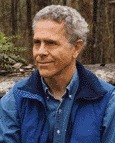After years of being told to sit up straight, turn down the music and try, just try, to stop texting friends for a few waking moments, my pubescent son finally found a way to get even. He challenged me to climb a 14,000-foot mountain with him.
At his Colorado summer camp, my son Cass had tripped during a hike of Pikes Peak and slashed his shin to the bone. Strange thing was, he didn’t even care about the 10 surgical staples in his leg. All he talked about was the awe of watching the sunrise from the top of the same mountain that, more than a century earlier, had inspired Katharine Lee Bates to write “America the Beautiful.” Now he was inspired, too.
It was thrilling to see my 12-year-old so excited about something besides consumer electronics. It was terrifying to realize that he expected to repeat the experience with me.
I saw his request as proof that love was truly blind. After all, I was fat, 44 and in the market for a vasectomy. My mortgage was half-gone, but so was my hair. Jon Krakauer was something to read, not try.
Eons ago—back when my inseam had more inches than my waistline—I had hiked a few peaks. Then I got married, had three kids and started working to meet the responsibilities and obligations that came with the change of life. I liked to eat, not exercise. The best days of my body were so far behind me that there was no way I could ever get my behind up a mountain.
Then my son asked me, “Please?”
I could not resist.
Thus was born my book, Halfway to Heaven: My White-knuckled—and Knuckleheaded—Quest for the Rocky Mountain High. Cass and I tried and failed to summit another 14,000-foot mountain, but I came away grateful for the hours alone with a son far beyond the range of any cell phone, Xbox or Facebook account. I was hooked.
I learned my home state of Colorado has 54 peaks higher than 14,000 feet—more than any other state or province in North America. Every year more than 500,000 people try to climb a Fourteener, but fewer than 1,300 have ever reported standing atop them all. Colorado’s Fourteeners have been summited by skiers and snowboarders, racers and amputees, dogs, cats, cockatiels, monkeys and horses, people as young as one and as old as 81. One Texan spent three weeks pushing a peanut to the summit of one peak with his nose. There have been gunfights and cannibalism, avalanches and helicopter crashes.
Together the peaks have killed more climbers than Everest. They also were powerful enough to convince a stay-at-home dad with a pot belly that he had a chance to summit them all.
My wife of 17 years was generally supportive of my Fourteeners quest, but, worried about my safety, insisted on one big catch: I could never hike alone. Unfortunately, I knew no one who was remotely interested in joining me on climbs of more than four dozen 14,000-foot mountains in the three-month climbing season between Memorial Day and Labor Day. I tried bribing friends, neighbors and friends of friends with free booze and car washes in exchange for their company on a mountain hike. No dice.
So I followed the lead of lonely and desperate people all over the world and sought help on the Internet. At a fledgling website, I found other people just as addicted to altitude. The result: several times a week, I would put the kids to bed, drive through the night to a wilderness trailhead, and sleep in a tent with a total stranger with hopes of summiting a peak the next day.
My man-dates turned out to be my favorite part of climbing the Fourteeners. I ended up hiking with, among others, an ex-drag racer trying to perform a handstand on the top of every Fourteener summit; the lead oboe player in a Hebrew salsa band; a 21-year-old college student who survived a 400-foot fall that killed his father; a man so shaky around heights that he chain-smoked Marlboros on ridgetops to calm his nerves; a widower at age 38 who turned to hiking to ease his grief; and, best of all, my oldest son.
Along the way I learned about the gold rushes, hangings, wildlife and geology of one of the world’s great ranges, the Rocky Mountains. I lost 15 pounds but gained some wisdom. The best lesson of all, though, came when I discovered that age, like summit height, was just a number.
Pulitzer Prize-winning journalist Mark Obmascik lives in Denver with his family.












